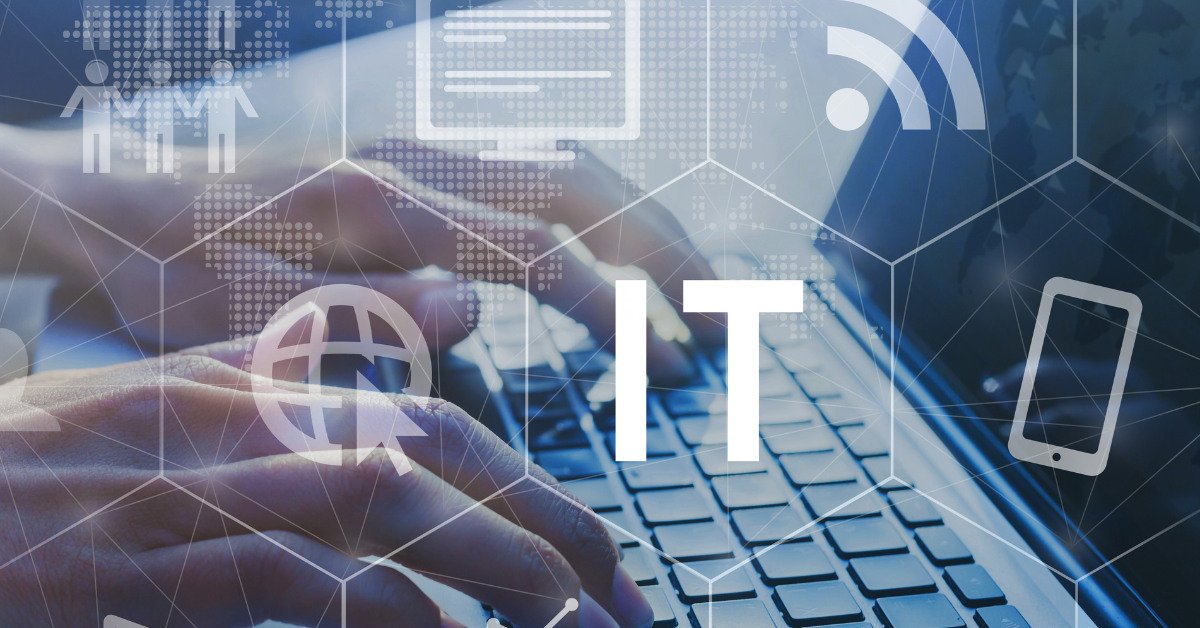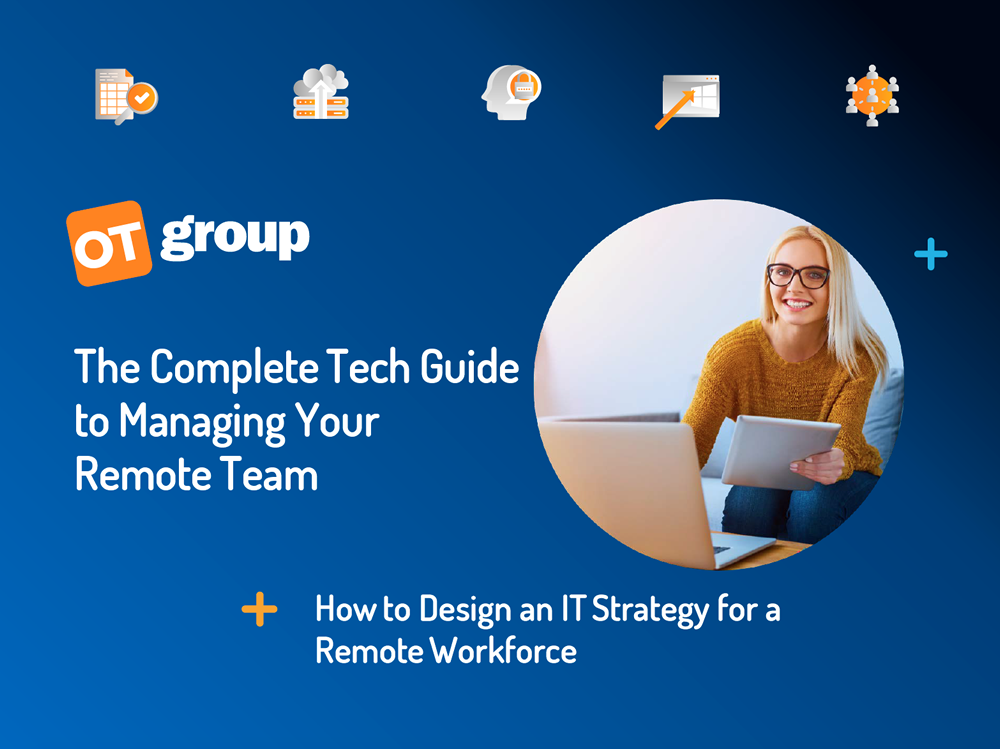So, you’re looking into your business’s IT Infrastructure for existing weaknesses and areas of improvement? That’s fantastic! Having a proper IT infrastructure is imperative to business growth and success, especially in today’s tech-centric world.
Like many, you’ve probably noticed that there’s a lot of IT infrastructure jargon to familiarize yourself with. Even the term IT Infrastructure is new to some people. For those who aren’t familiar with it, IT Infrastructure is the components and technology required to operate and manage information in a business.
To help you better understand what exactly everyone is talking about, here is a glossary of common terms that you’ll find in the IT industry when it comes to IT infrastructure.
Access Point: A device that lets wireless devices communicate with a wired network.
API: An Application Programming Interface (API) allows two different applications or software to communicate with each other using specific protocols.
Authentication: The process of verifying who you are. Most often done through usernames and passwords, though authentication methods are changing.
Backup: Copying and storing important information to ensure it is not lost if the original copy is lost or damaged.
Bandwidth: The amount of data that can be transmitted over a network.
BYOD: Bring Your Own Device (BYOD) refers to the usage of personal devices for business purposes, such as accessing company data or email. Most businesses create BYOD policies to protect company information.
Byte: A unit used to measure the size of data. There are 1,024 bytes in a kilobyte (KB). 1,024 KB in a megabyte (MB). 1,024 MB in a gigabyte (GB). And 1,024 GB in a terabyte (TB).
Cache: Files that are saved to your computer so that you can see pages you have already visited more quickly.
Cloud: The cloud, or cloud computing, is any software or service that runs on the internet instead of your computer. The most used cloud service is cloud storage such as iCloud, Google Drive or Dropbox.
Cookie: A piece of data that is stored on your computer and used to identify you when you are on a website. Among other things, cookies are what save information that you previously entered in a form or remember what items you left in your cart.
CPU: Your central processing unit (CPU) oversees all computer operations.
Cross-Platform: Refers to something that can be used on different systems and platforms. Software that can be used on both Apple and Microsoft computers is cross-platform. It is also used to refer to video games that can be played across different systems such as mobile, computer, Xbox and Playstation.
CSS: Cascading style sheet (CSS) defines how a web page is displayed to users. Website designers use CSS to make your website look nice.
CRM: Customer relationship management (CRM) is a set of processes, technologies and tools that help businesses manage their customer data and relationships.
Database: A collection of data that is organized for easy accessibility and management.
DLP: Data loss prevention (DLP) is tools and processes that protect data from being lost, misused or accessed without authorization.
Devices: Refers to hardware that is plugged into your system. Input devices include devices that allow you to send information to your system such as a keyboard, microphone or mouse. Output devices, like printers, monitors and speakers, help get information out of your computer.
Digital Transformation: Adopting digital technology to help improve innovation, value, efficiency and overall success.
Disruptive Technology: New technology that displaces another technology.
DNS: Domain name system (DNS) is like a GPS for the internet. You type in a URL like OTgroup.com (your destination address) and the DNS finds the corresponding IP address (GPS coordinates) so your computer can connect to the correct webpage. That way you don’t have to memorize long strings of numbers.
Domain: A domain (or domain name) is the URL used to find your website. OTgroup.com or google.com are both domains.
Download: Transferring files to your device from another.
Encryption: Encoding data so that it can only be viewed by the intended recipient.
Ethernet connection: transmitting data through a cable instead of using wireless signals.
Firewall: A network device that filters incoming and outgoing traffic based on a defined set of rules.
Flash Drive: A portable hard drive that plugs into your USB port. Also known as a USB drive.
FTP: File transfer protocol (FTP) is used to move files between computers.
Hardware: The physical components of a computer or other electrical system.
Hostnames: The name of a device on a network such as BROTHER-PRINTER, LAPTOP, JONS-PC, etc.
HTML: Hypertext Markup Language (HTML) is a programming language used to structure web pages and their content. It’s used to format elements such as font, size, headings, lists, line breaks and more.
HTTP: Hypertext Transfer Protocol (HTTP) is a set of rules for transferring data, such as text, videos and images, over the internet.
IP Address: Internet Protocol (IP) address is a unique set of numbers that is used to identify the location of an internet-enabled device.
ISP: Internet service provider (ISP) is a company that provides access to the internet.
LAN: Local area network (LAN) is a collection of connected devices in one location to form a network.
MAC Address: Medium Access Control (MAC) is a unique set of letters and numbers that is used to identify each individual device on the same network.
Modem: The hardware that connects your network to your internet service provider.
MSP: Managed Service Provider (MSP) is a third-party company that helps manage your IT infrastructure.
MFA: Multi-factor authentication (MFA) is an authentication method that requires two or more verification factors such as username/password as well as a pin from your phone and fingerprint.
Network: A group of interconnected devices that can exchange information. A LAN is a local network with several devices in the same location. The Internet is the largest network with devices from all over the world.
Network Adapter: A hardware component that lets devices connect to and communicate over a network.
Patch: Updates that quickly fix bugs or security vulnerabilities.
Phishing: Fraudulent communications that try to trick you into revealing personal or sensitive information.
Port: A virtual point where connections start and end. Also refers to a jack or receptacle on a device that other devices plug into.
RAM: Random access memory (RAM) is a short term memory bank where data is stored temporarily.
Ransomware: Malicious software that blocks access to your computer until ransom is paid.
Remote Desktop: Allows users to connect to and take control of a computer at another location.
Remote Login: Allows users to access data at another location without taking full control.
Router: Allows wired and wireless devices to use an internet connection at the same time and allows them to communicate with one another.
Server: A computer that manages all network resources and serves information to devices that connect with it.
SLA: Service level agreement (SLA) outlines the service that you expect from a vendor.
Software: instructions, data or programs that tell a computer what to do and executes tasks.
SaaS: Software as a service (SaaS) is a way of delivering software online instead of having the user install and maintain it.
Two-Factor Authentication: Two factor authentication is an authentication method that requires two verification factors such as username/password as well as a pin from your phone or fingerprint.
Upload: Transferring files from your device to another.
Virtual Desktop: A computer operating system that doesn’t run directly on the device you are accessing it from. The desktop is separate from the physical device.
Virus: A program that can infect a computer, corrupt and delete data, and spread without the user's permission or knowledge.
Vishing: Making phone calls or leaving messages to trick people into revealing personal or sensitive information.
VoIP: Voice over internet protocol (VoIP) is a phone system that takes and receives calls over an internet connection.
VPN: A virtual private network (VPN) protects your internet connection and online privacy by hiding your IP address.
WAN: Wide area network (WAN) is a collection of networks that communicate with one another.
WLAN: Wireless local area network (WLAN) is a network that connects devices in the same location using wireless communication.
WPA: Wifi protected access (WPA) is a set of rules used to protect devices that have a wireless internet connection.
Are you interested in learning more about any of these terms, or are looking for a third-party expert to help build and maintain your company’s IT infrastructure in Ontario, Canada? Get in touch with OT Group today. Our team of experts would love to help.




.png)
